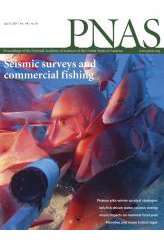Proc Natl Acad Sci U S A. 2021 Jul 27;118(30):e2023376118. doi: 10.1073/pnas.2023376118.
Morgane Le Rolle 1, Filippo Massa 1 2, Pam Siggers 3, Laurent Turchi 1 4, Agnès Loubat 1, Bon-Kyoung Koo 5 6, Hans Clevers 5, Andy Greenfield 3, Andreas Schedl 1, Marie-Christine Chaboissier 1, Anne-Amandine Chassot 7
Affiliations
1 CNRS, Inserm, Institut de Biologie Valrose, Université Côte d’Azur, Parc Valrose, 06108 Nice Cedex 2, France.
2 Inovarion, 75005 Paris, France.
3 Mammalian Genetics Unit, Medical Research Council Harwell Institute, Oxfordshire OX11 0RD, United Kingdom.
4 Délégation à la Recherche Clinique et à l’Innovation, Centre Hospitalier Universitaire de Nice, 06000 Nice, France.
5 Hubrecht Institute, Royal Netherlands Academy of Arts and Sciences, 3584 CT Utrecht, The Netherlands.
6 Institute of Molecular Biotechnology of the Austrian Academy of Sciences, Vienna Biocenter, 1030 Vienna, Austria.
7 CNRS, Inserm, Institut de Biologie Valrose, Université Côte d’Azur, Parc Valrose, 06108 Nice Cedex 2, France; Amandine.CHASSOT@univ-cotedazur.fr.
Abstract
Germ cells form the basis for sexual reproduction by producing gametes. In ovaries, primordial germ cells exit the cell cycle and the pluripotency-associated state, differentiate into oogonia, and initiate meiosis. Despite the importance of germ cell differentiation for sexual reproduction, signaling pathways regulating their fate remain largely unknown. Here, we show in mouse embryonic ovaries that germ cell-intrinsic β-catenin activity maintains pluripotency and that its repression is essential to allow differentiation and meiosis entry in a timely manner. Accordingly, in β-catenin loss-of-function and gain-of-function mouse models, the germ cells precociously enter meiosis or remain in the pluripotent state, respectively. We further show that interaction of β-catenin and the pluripotent-associated factor POU5F1 in the nucleus is associated with germ cell pluripotency. The exit of this complex from the nucleus correlates with germ cell differentiation, a process promoted by the up-regulation of Znrf3, a negative regulator of WNT/β-catenin signaling. Together, these data identify the molecular basis of the transition from primordial germ cells to oogonia and demonstrate that β-catenin is a central gatekeeper in ovarian differentiation and gametogenesis.
PMID: 34301885
DOI: 10.1073/pnas.2023376118

